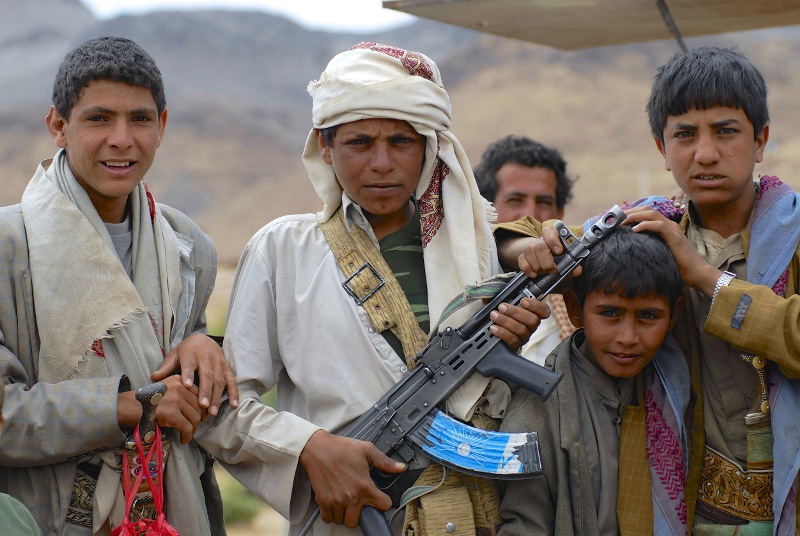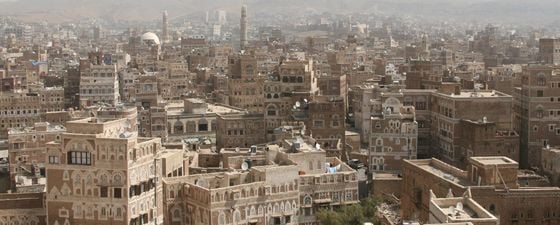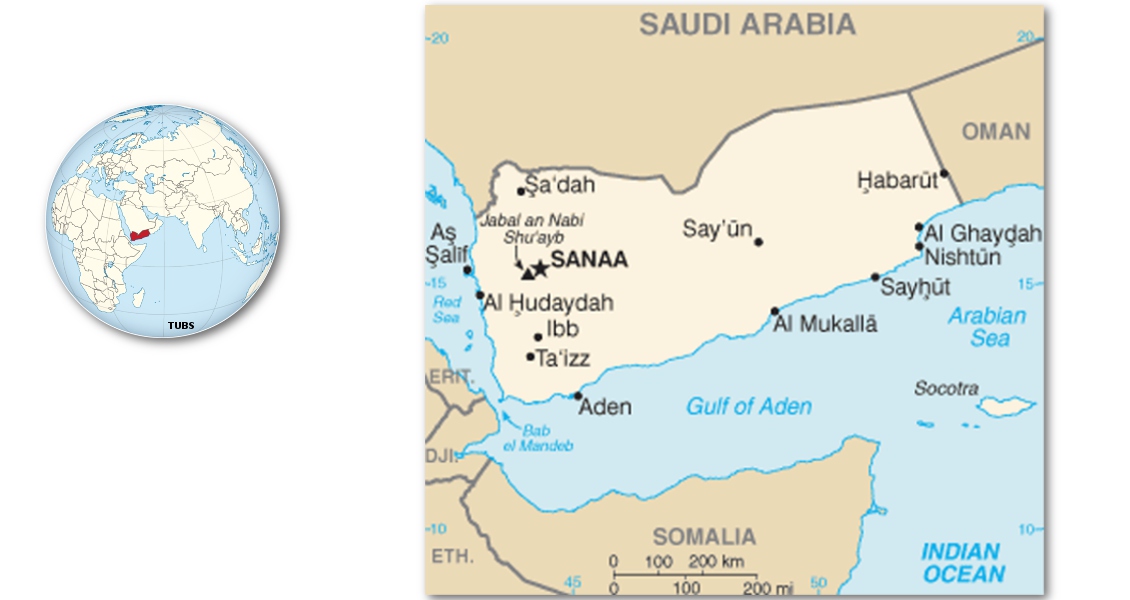Despite having known reserves and promising potential, as discussed in the complimentary article Petroleum Basins of Yemen, the bombing of pipelines and the blockading of ports over the last year have repeatedly stopped all exports of hydrocarbons from Yemen. Oil production dropped to just 44,000 bopd in mid-2015, down from 421,000 bopd a decade ago, and exports of LNG, which only began in 2009, are similarly affected.
However, Yemen has significance for the global oil economy beyond its own production. Along with Djibouti and Eritrea, it controls the 30 km wide Bab al-Mandab strait between the Red Sea and the Gulf of Aden. If this channel were to become unsafe, shipping would have to make the long voyage around Africa to connect the Mediterranean with the Indian Ocean.
Complicating its role as guardian of a key shipping lane, the country has slid into an Afghan-style chaos and more foreign powers have become involved, culminating in Saudi Arabia claiming in December that it now leads a 34-country strong, Muslim, anti-terrorism alliance. Distant states such as Malaysia, Nigeria and Morocco are included and non- Muslim countries, notably the US and UK, are willing and active backers.
A Proxy War for Saudi-Iranian Rivalry?
In January 2015, the Saudi-backed president installed in 2012 after the Arab Spring demonstrations, Hadi, was forced into exile. Although the Zaydi Houthis are doctrinally close to Sunni Islam, they consider themselves Shi’ite and their leadership has a high regard for Iranian-style politics. Their main objective, however, given that they are a third of Yemen’s population, is to preserve their separate cultural identity. For this reason they are Hadi’s main opponents. They have been backed by those loyal to the previous president, Saleh, and since March 2015 together they have controlled the western side of the country, including the capital, Sana’a, and the oil fields around Marib.
Saudi Arabia maintains that the Houthis are backed by their regional Shi’a enemy, Iran, although there is no clear evidence of this, and nor does it appear that Western backers believe this to be so. Since the overthrow of Saddam Hussein and Iraq’s change of leadership from Sunni to Shi’a, Saudi Arabia has become more nervous of perceived threats to its pre-eminence, and the nuclear peace deal with Iran has only exacerbated this. The fear of Shi’a encirclement appears to explain Saudi Arabia’s extraordinarily violent campaign, although it is true that the Kingdom has a long and complicated relationship with its poor southern neighbour, inflamed by decades of colonialism and the cold war. (South Yemen was the only Marxist state in the Middle East.) In addition, two provinces within Saudi Arabia are ethnically and culturally Yemeni and this porous border has provided a smuggling route for drugs and arms into the Kingdom.
The war in Yemen is significant for another development: the Kingdom’s new willingness to conduct an aggressive campaign abroad. This policy appears to be led by Prince Mohammed bin Salman, the thirty-year-old son of King Salman, who is second in line to the throne. At home he has been promoting the most conservative of clerics and strengthening the religious police, while in Yemen his campaign has been widely criticised for its bombing of civilians, including hospitals, far from Houthi positions, and for the use of cluster bombs that most of the world has declared illegal.
The question will be whether, in the medium term, the prince is strengthening or weakening the Saudi state. With oil prices low, the costs of war have increased the budget deficit to $95 billion. The Saudis have found themselves in the unusual position of announcing austerity measures, including the phasing out of popular fuel subsidies, as well as issuing government bonds to raise money.
In July, the Houthis were ousted from the port of Aden but since then there has been a bloody stalemate. Approximately 6,000 people, including many civilians, are believed to have died in Saudi bombing raids, and the near-famine conditions, fuel shortages and dry water pumps are such that even Somali exiles have returned home. Almost 22 million of Yemen’s 26 million population are now reliant on humanitarian aid.
Why Western Involvement?
 Yemeni teenagers in traditional dresses with janbiya knives proudly pose with a Kalashnikov machine gun in the Hadramawt valley, Yemen. (© www.123rf.com/Dmitry Chulow)Yemen’s conflict may have even greater significance for exposing some of the fault-lines in the tangled political alliances between Western and Middle Eastern powers. The US and UK have backed the bombing, and are reported to have military advisers in Riyadh supporting the campaign. Both states have continued to sell arms into a ‘hot conflict’, with apparent disregard for the international arms trade treaty they signed in 2014. US sales to Saudi Arabia are reported to have reached $24 billion since mid-2014.
Yemeni teenagers in traditional dresses with janbiya knives proudly pose with a Kalashnikov machine gun in the Hadramawt valley, Yemen. (© www.123rf.com/Dmitry Chulow)Yemen’s conflict may have even greater significance for exposing some of the fault-lines in the tangled political alliances between Western and Middle Eastern powers. The US and UK have backed the bombing, and are reported to have military advisers in Riyadh supporting the campaign. Both states have continued to sell arms into a ‘hot conflict’, with apparent disregard for the international arms trade treaty they signed in 2014. US sales to Saudi Arabia are reported to have reached $24 billion since mid-2014.
The West’s desire to support its long-time ally, Saudi Arabia, does not fully explain its involvement, and a military defeat of the Houthis has always been unlikely. It seems the West has Al Qaeda on the Arabian Peninsula (AQAP) and ISIS/Daesh in its sights, objectives that are not shared by their Middle Eastern partners. Both groups have gained control of significant areas of Yemen but, to the West’s alarm, the coalition appears to be avoiding engagement with either. Across the Middle East, there have been no calls for the coalition to unite against ISIS, and the Gulf countries have not moved to support the Syrians and Iraqis who are fleeing them. This is despite the fact that ISIS threatens the Gulf monarchies that it believes are not true defenders of the faith.
Yemeni peace talks began again at the end of 2015, with the objective of finding a federal solution. But with al Qaeda and ISIS holding territory within Yemen it is not clear that there is any foundation for a lasting peace. The tectonic plates of diplomacy and power are shifting and Yemen, poor and unstable, is likely to be a catalyst for change far beyond its own boundaries. For the ordinary Yemeni people, it seems that many more years of disunity and conflict lie ahead.







